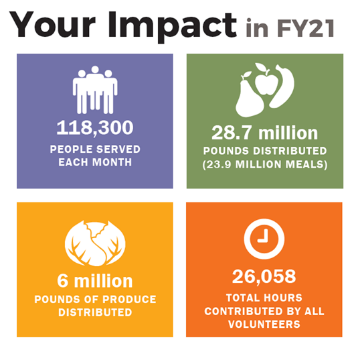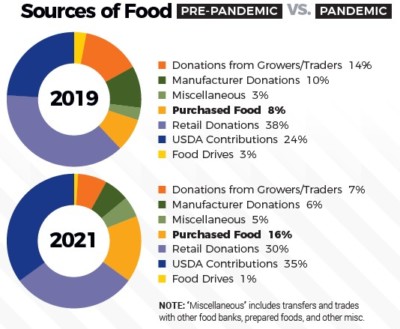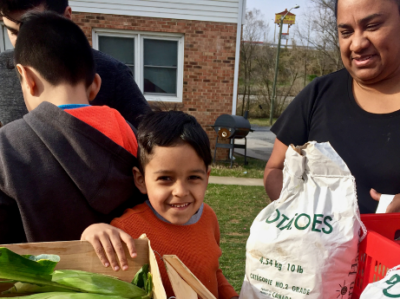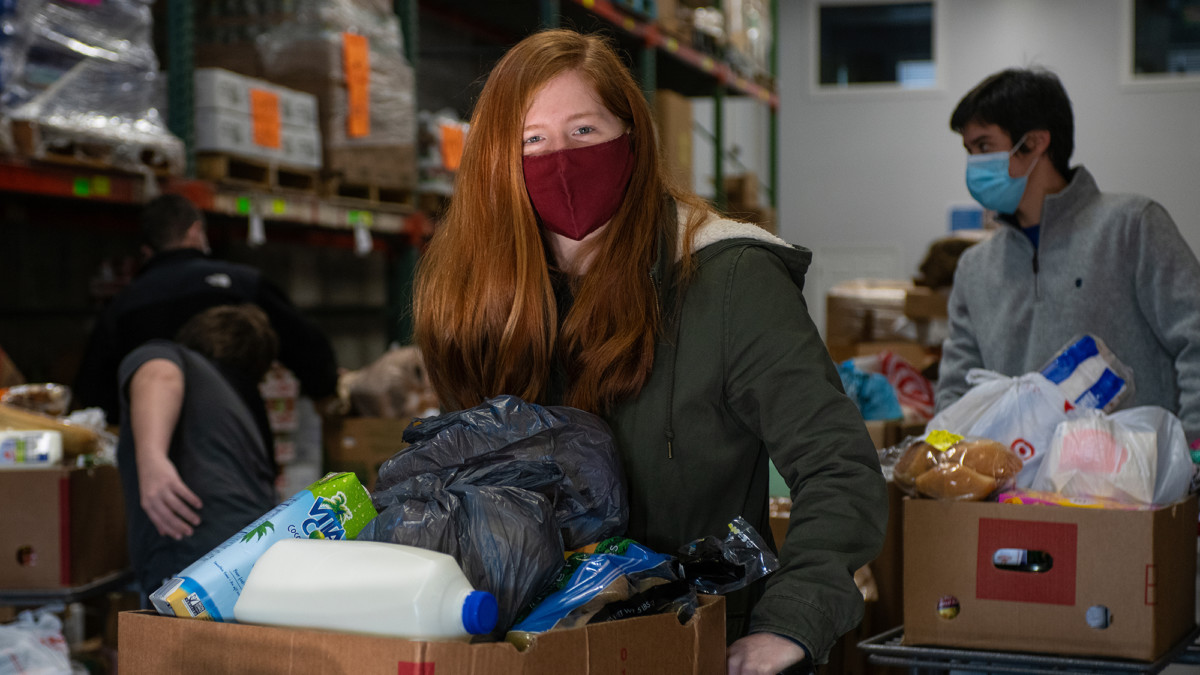Grappling with big questions about the future of food assistance
[The following is a written summary of material presented in a virtual CEO Forum event on Oct. 7, 2021]
What an impact one year can have—on the world, on our country, on our state, and in each of our communities. While I wish that I could say we are free and clear of the pandemic, I can say that we are coming out of an extraordinary year, and a challenging time for many families across our region and the country. During this time, the Blue Ridge Area Food Bank has stepped up to meet the new and evolving needs of our pantry partners and the people we all serve.
What are some of the factors that could shape or reshape the practice of food banking in the next five, 10, or 20 years? To be candid, none of us has the answers to these questions or potential scenarios. But at the Food Bank we are exploring these questions so that we are better prepared to realize our vision, where everyone has enough to eat.


What’s happening now?
But first, let’s consider our present circumstances. According to the latest data on food insecurity in our region, approximately 1-in-12 people living in the Blue Ridge area experiences hunger, including 1-in-12 children.
From June 2020 to July 2021, you helped us serve an average of 118,300 people per month. But that figure doesn’t convey the dramatic swings we experienced over the course of the pandemic, especially in the earliest days. In May 2020, the Food Bank and our partners served a record 145,000+ people. For comparison, in May of 2019, we served about 95,000 visitors. You also helped us distribute 28.7 million pounds of food—the equivalent of almost 24 million meals—including six million pounds of produce.
Volunteers stepped up to donate 26,000 hours of service—the equivalent of 13 staff positions. In just the past 12 months, more than 900 new volunteers have donated their valuable time packing boxes, sorting salvage food, helping at mobile pantry distributions, and more!
To meet the increased need and to compensate for declines in donations from food drives, growers, manufacturers, and retail grocers, we have dramatically increased the amount of food we buy. Purchased food went up from 8% of all food sources in 2019 to 16% in 2021. In addition, an increase in USDA contributions have been critical as the food donated by retailers went down.
We are very grateful for the generosity and commitment of our pantry partners, donors, volunteers, and staff who made it possible for us to help so many community members in these vital ways.
Here are some of the big questions we’re wrestling with moving forward.


Where will food be sourced?
Today, we’re distributing about 29 million pounds of food a year. If the need increases, or even if it stays level, where will all that food come from in the future? The reality of this question is complicated given the increasing cost of food, strain on the supply chain, and effects of global climate change.
Historically, the Food Bank received “rescued food,” or donated food, from grocery stores and retailers, but the landscape of our food sourcing has changed in recent years as grocers have become more efficient and have less food to donate. More food is now coming from the federal government, or it is purchased at-cost and distributed to pantry partners. Climate change complicates things further. We’re already seeing the impact of flooding and droughts on produce farms across the country and even within our own region. With less donated food and more of it coming at a higher price, there is concern about the flow of food and the sustainability of that model moving forward.
How can we make an even bigger impact? By working together
To address these challenges, we’ve established four strategic priorities to meet our goal of ensuring equitable access to nutritious food for people experiencing hunger. Through June 2023 we will:
- Strengthen and develop our food-assistance network of partners
- Increase food access for underserved populations
- Support efforts to improve nutrition and health outcomes
- Focus advocacy on federal support and statewide initiatives
Our work continues to be of vital importance. The network of Feeding America food banks serves 60 million people across the country. Of those people, we know that more than half live in households where someone is working. We also know that the food banks account for much of the food these neighbors use to feed their families.
We are advocating that the best way to help these 60 million people is not through food banks alone, but through government benefits like SNAP, which empower neighbors to choose while reinvesting financially through groceries purchased at local stores.
We know the impact of this crisis will continue for months and possibly years to come. We are incredibly grateful for the outpouring of community support–funds, volunteers, attention–that we’ve received over the past two years.
 Chew On This
Chew On This


